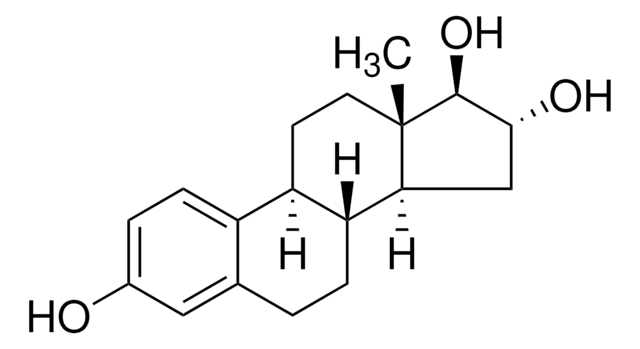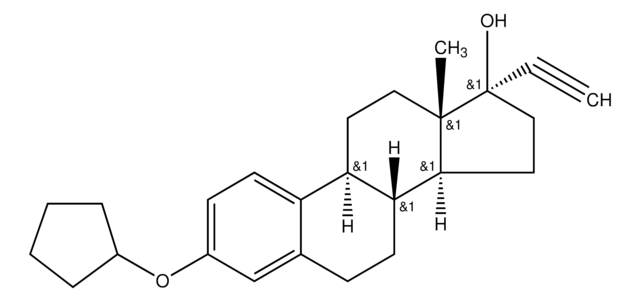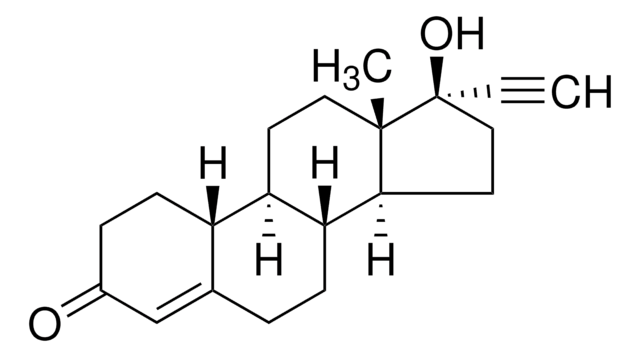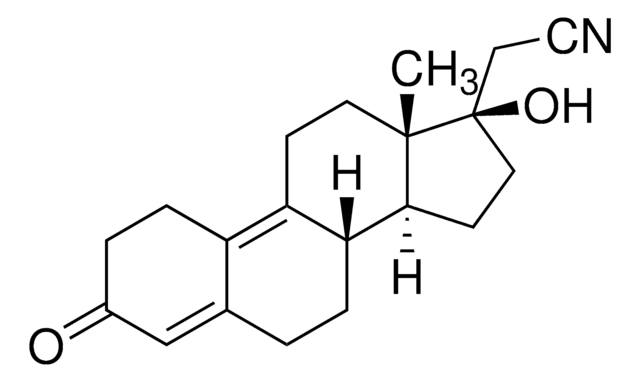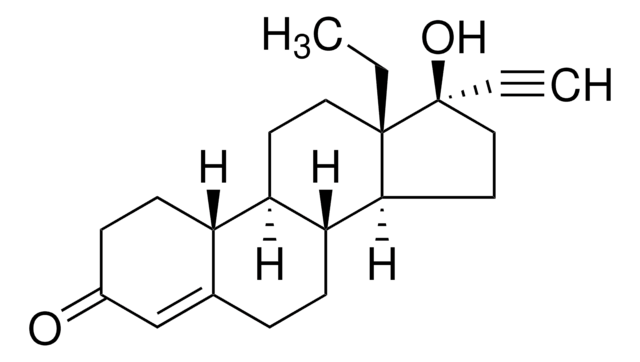E4876
17α-Ethynylestradiol
≥98%
Sinonimo/i:
Ethinylestradiol
About This Item
Prodotti consigliati
Origine biologica
synthetic
Sterilità
non-sterile
Saggio
≥98%
Stato
powder
Punto di fusione
182-183 °C (lit.)
Solubilità
ethanol: 50 mg/mL, clear, colorless to faintly yellow
Condizioni di spedizione
ambient
Temperatura di conservazione
room temp
Stringa SMILE
[H][C@]12CC[C@@]3(C)[C@@]([H])(CC[C@@]3(O)C#C)[C@]1([H])CCc4cc(O)ccc24
InChI
1S/C20H24O2/c1-3-20(22)11-9-18-17-6-4-13-12-14(21)5-7-15(13)16(17)8-10-19(18,20)2/h1,5,7,12,16-18,21-22H,4,6,8-11H2,2H3/t16-,17-,18+,19+,20+/m1/s1
BFPYWIDHMRZLRN-SLHNCBLASA-N
Informazioni sul gene
human ... ESR1(2099)
rat ... Afp(24177) , Esr1(24890) , Shbg(24775)
Cerchi prodotti simili? Visita Guida al confronto tra prodotti
Categorie correlate
Descrizione generale
Applicazioni
Azioni biochim/fisiol
Avvertenze
Danger
Indicazioni di pericolo
Consigli di prudenza
Classi di pericolo
Acute Tox. 4 Oral - Aquatic Chronic 1 - Carc. 2 - Repr. 1A
Codice della classe di stoccaggio
6.1C - Combustible acute toxic Cat.3 / toxic compounds or compounds which causing chronic effects
Classe di pericolosità dell'acqua (WGK)
WGK 3
Dispositivi di protezione individuale
Eyeshields, Gloves, type P3 (EN 143) respirator cartridges
Scegli una delle versioni più recenti:
Possiedi già questo prodotto?
I documenti relativi ai prodotti acquistati recentemente sono disponibili nell’Archivio dei documenti.
I clienti hanno visto anche
Il team dei nostri ricercatori vanta grande esperienza in tutte le aree della ricerca quali Life Science, scienza dei materiali, sintesi chimica, cromatografia, discipline analitiche, ecc..
Contatta l'Assistenza Tecnica.

